Treatment with a next-generation CAR T-cell agent displayed early efficacy in a small group of patients with glioblastoma.
Get Started for FREE
Sign up with Facebook Sign up with X
I don't have a Facebook or a X account

 Your new post is loading... Your new post is loading...
 Your new post is loading... Your new post is loading...
From
www
Current approaches for inserting autonomous transgenes into the genome, such as CRISPR–Cas9 or virus-based strategies, have limitations including low efficiency and high risk of untargeted genome mutagenesis. Here, we describe precise RNA-mediated insertion of transgenes (PRINT), an approach for site-specifically primed reverse transcription that directs transgene synthesis directly into the genome at a multicopy safe-harbor locus. PRINT uses delivery of two in vitro transcribed RNAs: messenger RNA encoding avian R2 retroelement-protein and template RNA encoding a transgene of length validated up to 4 kb. The R2 protein coordinately recognizes the target site, nicks one strand at a precise location and primes complementary DNA synthesis for stable transgene insertion. With a cultured human primary cell line, over 50% of cells can gain several 2 kb transgenes, of which more than 50% are full-length. PRINT advantages include no extragenomic DNA, limiting risk of deleterious mutagenesis and innate immune responses, and the relatively low cost, rapid production and scalability of RNA-only delivery. Transgenes are inserted into human cells by 2-RNA delivery of a retroelement protein and template.
BigField GEG Tech's insight:
The recent approval of a CRISPR-Cas9 therapy for sickle-cell anemia demonstrates that gene-editing tools can do an excellent job of eliminating genes to cure inherited diseases. But it is still not possible to insert entire genes into the human genome to replace them with defective or deleterious genes. A new technique, called RNA-mediated Precise Transgene Insertion, or PRINT, exploits the ability of certain retrotransposons to efficiently insert whole genes into the genome without affecting other genome functions. PRINT would complement the recognized ability of CRISPR-Cas technology to deactivate genes, perform point mutations and insert short segments of DNA. For PRINT, one piece of delivered RNA encodes a common retroelement protein called the R2 protein, which has several active parts, including a nickase and a reverse transcriptase. The other RNA is the template for the transgenic DNA to be inserted, as well as the elements controlling gene expression
This study is led by Prof. Xianqun Fan (Department of Ophthalmology, Shanghai Jiao Tong University School of Medicine Affiliated Ninth People's Hospital).
BigField GEG Tech's insight:
In a review, researchers detail the development history of Principal Editing (PE), the latest evolution of CRISPR-Cas-based technologies. PE was proposed by a team of researchers in 2019, which is characterized by the absence of double-strand breaks (DSBs) or homology sequence patterns with variable application scenarios, including point mutations as well as insertions or deletions. The PE system consists of two parts: the master editors (PEs) and the master editing guide RNA (pegRNA). This PE system has developed and progressed rapidly over the last four years, with versatile advances in its architecture to increase editing efficiency, targeting and specificity, including a new pegRNA design, PE modification and improved delivery. Moreover, despite its relatively recent inception, PE has been widely applied to correct pathological mutations associated with genetic diseases, both in vitro and in vivo , presenting great potential for advancing the field of gene therapy from bench to bedside.
Researchers developed an RNA-based switch, the pA regulator system, to control gene expression in mammalian cells by modulating synthetic polyA signal cleavage, offering a novel approach for gene therapy applications.
BigField GEG Tech's insight:
Genetic control in mammalian cells is essential for the development of safe and effective gene therapies. Current methods are associated with certain drawbacks, such as undesirable immunological responses, limited efficacy and overexpression of therapeutic genes. Current gene transfer technologies, such as adeno-associated viruses (AAVs), have difficulty achieving conditional and reversible gene control. Toxic ligands, leakage and high ligand concentrations, as well as small dynamic range are some of the limitations associated with current RNA-based systems. In a recent study researchers describe the pA regulatory system, inserted into cells by CRISPR-Cas9, based on a ribonucleic acid (RNA)-based switch to regulate mammalian gene expression by modulating the cleavage of a synthetic polyA signal (PAS) at a transgenic 5' untranslated region. (UTR). This technique differs from traditional riboswitch systems in that the PAS is present in the 5' UTR, combines the effects of numerous aptamers and uses two processes of Tc binding and alternative splicing. However, the new system can only use Tc as an inducing ligand, which cannot effectively penetrate all body tissues.
RAG2-SCID is a primary immunodeficiency caused by mutations in Recombination-activating gene 2 (RAG2), a gene intimately involved in the process of lymphocyte maturation and function. ex-vivo manipulation of a patient’s own hematopoietic stem and progenitor cells (HSPCs) using CRISPR-Cas9/rAAV6 gene editing could provide a therapeutic alternative to the only current treatment, allogeneic hematopoietic stem cell transplantation (HSCT). Here we show an innovative RAG2 correction strategy that replaces the entire endogenous coding sequence (CDS) for the purpose of preserving the critical endogenous spatiotemporal gene regulation and locus architecture. Expression of the corrective transgene leads to successful development into CD3+TCRαβ+ and CD3+TCRγδ+ T cells and promotes the establishment of highly diverse TRB and TRG repertoires in an in-vitro T-cell differentiation platform. Thus, our proof-of-concept study holds promise for safer gene therapy techniques of tightly regulated genes. RAG2-SCID is a primary immunodeficiency caused by mutations in Recombination-activating gene 2 (RAG2). Here the authors report a RAG2 correction strategy that replaces the entire endogenous coding sequence (CDS) to maintain the endogenous spatiotemporal gene regulation and locus architecture.
BigField GEG Tech's insight:
Severe combined immunodeficiency represents rare monogenic disorders with defects in humoral and cellular immunity. RAG genes code for proteins that initiate lymphoid-specific V(D)J recombination, essential for T and B lymphocyte maturation. As a result, individuals carrying pathogenic RAG variants are either completely devoid of, or possess far fewer, B and T cells. In a recent study, researchers described a CRISPR-Cas9-based genome-editing approach to replace the entire respective RAG2 coding sequences (CDS) with a corrective transgene in a 34-positive (CD34+) hematopoietic stem and progenitor cell (HSPC) differentiation cluster. Two recombinant adeno-associated virus serotype 6 (rAAV6) vectors were synthesized to integrate a green fluorescent protein expression cassette and a bovine growth hormone polyA sequence into CD34+ HSPCs after delivery of a single modified RAG2 guide RNA or the Cas9 ribonucleoprotein complex. The researchers' strategy completely replaced RAG2 CDS to treat autosomal recessive immunity disorders. The method induced expression of RAG2 coding DNA without exceeding endogenous RAG2 expression levels. Correction donors promoted the successful recombination and differentiation of V(D)J into CD3 + TCRγδ + and CD3 + TCRαβ + T cells.
Rochester Institute of Technology researchers are improving non-invasive treatment options for degenerative disc disease, an ailment that impacts 3 million adults yearly in the U.S., according to the Mayo Clinic.
BigField GEG Tech's insight:
Researchers are improving non-invasive treatment options for degenerative disc disease, a condition that affects 3 million adults each year in the U.S. Stem cell therapy has been a viable field in regenerative technologies for many pathologies for several years. However, the degenerated intervertebral disc provides a hostile environment that is detrimental to stem cell survival, resulting in limited clinical success of stem cell therapy for the disc. Previous research has shown that stem cell-derived electrical vehicles contain many therapeutically beneficial proteins, lipids and nucleic acids and carry much of the regenerative potential of stem cells. However, by using CRISPR in mesenchymal stem cells, researchers have added to the growing field of regenerative medicine the process of producing cell-based therapies to alleviate pain and lack of mobility. In their study, the researchers target TSG6, an essential stem cell marker known to be linked to the regenerative and anti-inflammatory properties of these stem cells. Their hypothesis is that if they CRISPR-activate TSG6 in stem cells, they will not only increase TSG6 protein levels in the extracellular vesicle cargo, but potentially amplify the stem cells' anti-inflammatory and regenerative properties.
Vaccine boosting modifies CAR T cell metabolism and promotes crosstalk between CAR
BigField GEG Tech's insight:
Engineering T cells to destroy cancer cells has proved effective in treating certain types of cancer. However, it has not worked as well for solid tumors. One of the reasons for this lack of success is that T cells only target a single antigen. If some of the tumor cells don't express this antigen, they can evade T cell attack. In 2019, researchers found a way to overcome this obstacle, using a vaccine that enhances CAR-T cell efficacy. In a recent study, researchers wanted to investigate how this additional T-cell response is activated. The researchers discovered that in these vaccinated mice, metabolic changes occur in CAR-T cells that increase their production of interferon gamma, a cytokine that helps stimulate a strong immune response. This helps T cells overcome the tumor's immunosuppressive environment, which normally shuts down all T cells in the vicinity. As CAR-T cells killed tumor cells expressing the target antigen, host T cells encountered other antigens from these tumor cells, stimulating these host T cells to target these antigens and help destroy the tumor cells. Without this host T-cell response, the researchers found that tumors would regrow even if CAR-T cells destroyed most of them.
Molecular routes to metastatic dissemination are critical determinants of aggressive cancers. Through in vivo CRISPR–Cas9 genome editing, we generated somatic mosaic genetically engineered models that faithfully recapitulate metastatic renal tumors. Disruption of 9p21 locus is an evolutionary driver to systemic disease through the rapid acquisition of complex karyotypes in cancer cells. Cross-species analysis revealed that recurrent patterns of copy number variations, including 21q loss and dysregulation of the interferon pathway, are major drivers of metastatic potential. In vitro and in vivo genomic engineering, leveraging loss-of-function studies, along with a model of partial trisomy of chromosome 21q, demonstrated a dosage-dependent effect of the interferon receptor genes cluster as an adaptive mechanism to deleterious chromosomal instability in metastatic progression. This work provides critical knowledge on drivers of renal cell carcinoma progression and defines the primary role of interferon signaling in constraining the propagation of aneuploid clones in cancer evolution. Using genetically engineered models, Genovese and colleagues study patterns of convergent evolution in renal cancer, and pinpoint dysregulation of interferon signaling as a means of adaptation to chromosomal instability in metastatic progression.
BigField GEG Tech's insight:
One of the hallmarks of renal cell carcinoma (RCC) is chromosomal instability, which is associated with resistance to many types of therapy and a poor prognosis. It is not known whether specific types of chromosomal abnormalities are involved in metastasis and how tumors are able to tolerate them. Researchers have used CRISPR/Cas9-based genome editing to generate models of aggressive renal cell carcinoma (RCC), lacking common tumor suppressor genes. Using genome sequencing and single-cell RNA sequencing to examine these models in more detail, the researchers uncovered the molecular drivers of RCC and gained a new understanding of the evolution of chromosomal instability. IFNR gene clusters are normally involved in the immune response. After analyzing various datasets from mice and humans, the researchers discovered an inverse correlation between the loss of these IFNR genes and aneuploidy, a condition characterized by an abnormal number of chromosomes. This study suggests that tumors adapt to high levels of chromosomal instability by disrupting the IFNR pathway, and that this is likely to be a major biomarker of metastatic potential. In future, the researchers plan to test drug combinations in these newly generated models to determine how tumors adapt to various therapies.
The most common form of genetic heart disease is hypertrophic cardiomyopathy (HCM), which is caused by variants in cardiac sarcomeric genes and leads to abnormal heart muscle thickening. Complications of HCM include heart failure, arrhythmia and sudden cardiac death. The dominant-negative c.1208G>A (p.R403Q) pathogenic variant (PV) in β-myosin (MYH7) is a common and well-studied PV that leads to increased cardiac contractility and HCM onset. In this study we identify an adenine base editor and single-guide RNA system that can efficiently correct this human PV with minimal bystander editing and off-target editing at selected sites. We show that delivery of base editing components rescues pathological manifestations of HCM in induced pluripotent stem cell cardiomyocytes derived from patients with HCM and in a humanized mouse model of HCM. Our findings demonstrate the potential of base editing to treat inherited cardiac diseases and prompt the further development of adenine base editor-based therapies to correct monogenic variants causing cardiac disease. Adenine base editing successfully corrected a MYH7 pathogenic variant that causes hypertrophic cardiomyopathy in human cardiomyocytes and a mouse model of the disease, highlighting the potential of the approach to correct monogenic variants causing cardiac disease.
BigField GEG Tech's insight:
The thickening of the heart muscle associated with hypertrophic cardiomyopathy leads to arrhythmia, heart failure and sudden cardiac death. The disease often goes undiagnosed, and heart transplantation is the only known treatment. Researchers have been working on a therapy using base editing to correct one of the mutations causing HCM. In this latest study, their target was a mutation in the myosin heavy chain 7 (MYH7) gene. MYH7 encodes β-myosin heavy chain, a motor ATPase that incorporates into heart muscle filaments and affects their contractions. Moreover, the pathogenic G-to-A mutation in the MYH7 gene studied is responsible for a severe, early-onset form of Crohn's disease. The team used the CRISPR-Cas 9 system to correct the MYH7 mutation in induced pluripotent stem cells derived from MHC patients, achieving extremely high editing efficiencies of up to 99%, with little or no off-target. The next step will be to obtain more data in a large animal model and make this potential therapy as safe as possible.
Adoptive transfer of genetically engineered chimeric antigen receptor (CAR) T cells is becoming a promising treatment option for hematological malignancies. However, T cell immunotherapies have mostly failed in individuals with solid tumors. Here, with a CRISPR–Cas9 pooled library, we performed an in vivo targeted loss-of-function screen and identified ST3 β-galactoside α-2,3-sialyltransferase 1 (ST3GAL1) as a negative regulator of the cancer-specific migration of CAR T cells. Analysis of glycosylated proteins revealed that CD18 is a major effector of ST3GAL1 in activated CD8+ T cells. ST3GAL1-mediated glycosylation induces the spontaneous nonspecific tissue sequestration of T cells by altering lymphocyte function-associated antigen-1 (LFA-1) endocytic recycling. Engineered CAR T cells with enhanced expression of βII-spectrin, a central LFA-1-associated cytoskeleton molecule, reversed ST3GAL1-mediated nonspecific T cell migration and reduced tumor growth in mice by improving tumor-specific homing of CAR T cells. These findings identify the ST3GAL1–βII-spectrin axis as a major cell-intrinsic program for cancer-targeting CAR T cell migration and as a promising strategy for effective T cell immunotherapy. CAR T cell success requires targeting tumors, but these cells can get trapped in other tissues, such as in the lungs, where they can cause pathology. Here, the authors use a loss-of-function CRISPR screen to identify regulators of CAR T cell tumor trafficking and engineer CAR T cells accordingly to overcome this limitation.
BigField GEG Tech's insight:
Immunotherapy, particularly CAR T-Cell cancer therapy, extends the lives of many patients. But sometimes the therapy randomly migrates to places it shouldn't go, sneaking into the lungs or other non-cancerous tissue and causing toxic side effects. However, a team of researchers has discovered the molecule responsible for guiding T cells to tumors, setting the stage for scientists to improve the revolutionary treatment. Their discovery of the crucial migration control gene that expresses ST3GAL1 is the result of "unbiased genomic screening": researchers used a state-of-the-art CRISPR technique to edit thousands of genes expressed in T cells, then tested the migration control capabilities of these genes, one by one over a period of nearly four years, in mouse models. The next step is to find a drug that can manipulate the key T cell protein, ST3GAL1. If the study progresses as planned, such a drug could be added to the CAR T-cell regimen to ensure that the T cells reach their targets
The genetic mutation underlying a severe immune system deficiency can be corrected
BigField GEG Tech's insight:
The rare and fatal genetic disease CD3 delta severe combined immunodeficiency, also known as CD3 delta SCID, is caused by a mutation in the CD3D gene, which prevents the production of the CD3 delta protein needed for normal T cell development from blood stem cells. Currently, bone marrow transplantation is the only treatment available, but the procedure carries significant risks. In a study published in Cell, researchers showed that a new genome editing technique called base editing can correct the mutation that causes CD3 delta SCID in blood stem cells and restore their ability to produce T cells. The basic editor corrected an average of nearly 71 percent of the patient's stem cells in three experiments. The researchers then tested whether the corrected cells could give rise to T cells. When the corrected blood stem cells were introduced into artificial thymic organoids, they produced fully functional and mature T cells. The corrected cells remained four months after transplantation, indicating that the basic editing had corrected the mutation in the true self-renewing blood stem cells. The results suggest that the corrected blood stem cells could persist over the long term and produce the T cells that patients would need to lead healthy lives.
Understanding moral acceptability and willingness to use is crucial for informing policy
BigField GEG Tech's insight:
Preimplantation genetic testing has become standard care for parents at risk of having children with chromosomal and single gene disorders. Embryos created via in vitro fertilization (IVF) can be genetically screened for abnormalities prior to implantation, thus minimizing the risk of inherited genetic disease. However, most human traits are highly polygenic. Preimplantation genetic testing for polygenic risk (PGT-P) is an emerging technology that can screen the entire genome of an embryo and uses polygenic indices to predict the likelihood of a particular polygenic phenotype occurring if used in IVF. Targeted outcomes range from risk of cancer and other diseases to a child's potential educational attainment. Although PGT-P is available in IVF clinics around the world, it remains unregulated in the United States and has received far less public attention and policy discussion than other technologies that seek to exert control over genetic traits, such as germline gene editing via CRISPR. To better understand the public's views toward PGT-P, researchers conducted a prerecorded national survey experiment on attitudes toward PGT-P. The authors found that moral acceptability and willingness to use PGT-P were higher than those for germline gene editing.
Ablation of CaMKIIδ oxidation by CRISPR-Cas9 base editing as a therapy for cardiac disease - ScienceCRISPR-Cas9 gene editing is emerging as a prospective therapy for genomic mutations. However, current editing approaches are directed primarily toward relatively small cohorts of patients wit
BigField GEG Tech's insight:
A novel CRISPR-Cas9 approach that targets a damaging signaling pathway in the heart confers protection against ischemia and reperfusion injury, according to a study in mice. The findings suggest that gene editing could offer a permanent, advanced strategy for treating heart disease and even serve as an intervention to repair heart damage immediately after a heart attack. CRISPR-Cas9 gene editing has shown promise as a therapeutic approach for the treatment of rare inherited diseases. Chronic overactivation of Ca2+/calmodulin-dependent protein kinase IIδ (CaMKIIδ) is known to cause several heart diseases in humans and mice, including lesions. The researchers found that using CRISPR-Cas9 adenine base editing to eliminate oxidative activation sites of the CaMKIIδ gene in cardiomyocytes protected them from IR injury in mouse models. In addition, the researchers found that injecting gene-editing reagents into mice shortly after IR injury allowed the animals to recover cardiac function after severe damage.
|
Over the past two decades, the immune system has attracted increasing attention for its role in fighting cancer.
BigField GEG Tech's insight:
CRISPR-based gene editing has become a mainstay of biological discovery, providing relatively rapid insight into the function of individual genes and targets for new therapies. However, the main challenge is that it is difficult to edit immune cells without changing their biology, hampering the ability to study immune cell behavior in all its complexity in a living organism. In an earlier study, researchers used CHimeric IMmune Editing (CHIME) to knock out a gene called Ptpn2, which has shown promise for cancer immunotherapy. The recent study published in Nature Immunology explores methods to increase the precision and versatility of CHIME, including simultaneous deletion of multiple genes and targeted application in specific cell types, also using CRISPR to disrupt genes in the edited cells once they were already back inside the animal. This research has successfully demonstrated the feasibility of various innovative approaches to genetic manipulation, offering new avenues for the study of immune gene function.
Review synthesizes research on NK cells' role in cancer immunity and their potential in therapeutics through bioengineering, immune checkpoint inhibitors, and cell engagers, highlighting ongoing preclinical and clinical trials.
BigField GEG Tech's insight:
In a recent study published in the journal Nature, researchers have compiled the available literature on natural killer (NK) cells, innate immune cells involved in the recognition and elimination of cells in distress, particularly virus-infected cells and tumors. They focus on reviewing current preclinical and clinical research in the field of NK therapies, primarily elucidating the role of NK cells in cancer immunity. They also explore the potential of bioengineering approaches to harness NK cells via the development of genetically modified NK cells, immune checkpoint inhibitors and cell engagement agents. The study reveals that, despite less than two decades of research in the field, NK cells are emerging as a safe, practical and potentially widely accessible means of clinical therapy, particularly antitumor. Although challenges exist in the adoption of NK cell therapies by conventional medicine, studies aimed at overcoming these challenges are already underway, bringing the future of clinical NK cell interventions closer than ever.
A new light-inducible RNA base editing tool, padCas13, combines the specificity of CRISPR-Cas13 with the control of light activation and allows for precise, reversible RNA targeting and degradation in mammalian cells, both in vitro and in vivo.
BigField GEG Tech's insight:
The padCas13 editor can efficiently edit A-to-I and C-to-U RNA bases, targeting disease-relevant transcripts. Photoactivatable base editing represents a significant advance in CRISPR technology, as it enables fine-tuning of gene expression and post-translational modifications without permanent alterations to the genome. This method is particularly relevant for diseases in which transient modulation of gene expression may have therapeutic benefits. A crucial element of padCas13 is the Magnet system, which comprises a positively and negatively charged Magnet protein. These proteins are designed to heterodimerize rapidly in response to light, thereby activating the Cas13 nuclease.
The recent publication in Science by Mogila, Tamulaitiene et al. represents a continuation of the successful scientific research conducted by Gintautas Tamulaitis' group.
BigField GEG Tech's insight:
In a recent study published in Science, researchers characterized a new family of effector proteins, named Cami1, using bioinformatics, biochemical and structural studies. They showed that when a virus attacks a bacterium, CRISPR-Cas10 signaling molecules activate Cami1, a ribosome-dependent ribonuclease. Activated Cami1 cleaves mRNAs involved in protein synthesis, inhibiting cell growth. This saves resources and prevents the production of viral proteins. Cami1's interaction with a specialized ribosomal structure, called a ribosomal stalk, is necessary for its entry into the protein synthesis center. Interestingly, the same capture mechanism to bind the ribosome is used by plant antiviral proteins that also inactivate ribosomes. This discovery has unveiled an additional layer of the CRISPR-Cas antiviral defense system and demonstrated a common antiviral strategy shared between eukaryotes and bacteria. Knowledge of our characterized Cami1 proteins will contribute to the development of new molecular tools in biotechnology and therapy
The gene editing technique CRISPR/Cas9 has allowed researchers to make precise and impactful changes to an organism's DNA to fix mutations that cause genetic disease.
BigField GEG Tech's insight:
CRISPR/Cas9 method can lead to unintended DNA mutations that can have negative effects. Recently, Japanese researchers have developed a new gene-editing technique that is as effective as CRISPR/Cas9, yet significantly reduces these unintended mutations. In a new study published in Nature Communications , researchers led by Osaka University have introduced a new technique called NICER, based on the creation of several small cuts in single DNA strands by an enzyme Cas 9 nickase. For their first experiments, the research team used human lymphoblastic cells with a known heterozygous mutation in a gene called TK1. When these cells were treated with nickase to induce a single cut in the TK1 region, TK1 activity was recovered at a low rate. However, when nickase induced multiple cuts in this region on both homologous chromosomes, the efficiency of gene correction was increased approximately seventeen-fold via activation of a cellular repair mechanism. Because the NICER method does not involve DNA double-strand breaks or the use of exogenous DNA, this technique appears to be a safe alternative to conventional CRISPR/Cas9 methods.
Scientists at Leipzig University, in collaboration with colleagues at Vilnius University in Lithuania, have developed a new method to measure the smallest twists and torques of molecules within milliseconds.
BigField GEG Tech's insight:
With the help of an embedded RNA, CRISPR complexes recognize a short DNA sequence. To better understand this process, researchers took advantage of the fact that the DNA double helix of the target sequence is unwound during recognition to allow base pairing with the RNA. Using a technique known as DNA origami, the researchers constructed a 75 nm-long DNA rotor arm with a gold nanoparticle attached to its end. In the experiment, the unwinding of the 2 nm thick, 10 nm long DNA sequence was transferred to the rotation of the gold nanoparticle along a 160 nm diameter circle: this movement could be amplified and tracked using a special microscope setup. With this new method, the researchers were able to observe sequence recognition by the CRISPR complex almost base pair by base pair. Surprisingly, base pairing with RNA is not energetically advantageous, meaning that the complex is only unstably bound during sequence recognition. Only when the entire sequence is recognized does stable binding occur, and the DNA is then destroyed. The sometimes erroneous results are due to its stochastic nature, i.e. random molecular movements.
Induced pluripotent stem (iPS) cells have a great impact on biology and medicine, and they are expected to improve regenerative medicine.
BigField GEG Tech's insight:
Fabry disease is caused by a genetic deficiency of α-galactosidase A (GLA), leading to the accumulation of its substrates such as globotriaosylceramide and globotriaosylsphingosine. Researchers have therefore developed a modified enzyme, modified α-N-acetylgalactosaminidase (mNAGA), to cure Fabry disease by changing the substrate specificity of NAGA to that of GLA. In this study, researchers tested whether genome-editing transplantation of mNAGA-secreting induced pluripotent stem cells (iPS) cells could deliver GLA activity in vivo. They therefore generated mNAGA-secreting iPS cells by TALEN-mediated knock-in at the AAVS1 site, a refuge locus. Furthermore, to exclude possible immunogenic reactions caused by endogenous GLA from iPS cells in patients, they disrupted the GLA gene by CRISPR-Cas9. When cardiomyocytes and fibroblasts from the Fabry model without GLA activity were co-cultured with mNAGA-secreting iPS cells, GLA activity was restored by mNAGA-expressing cells in vitro. Next, they transplanted the mNAGA-secreting iPS cells into the testes of mouse models of Fabry disease. After 7 or 8 weeks, GLA activity in the liver was significantly improved, although no recovery of activity was observed in the heart, kidneys or blood plasma.
Gene therapy that alters hemoglobin genes may be an answer to curing sickle cell disease (SCD) and beta thalassemia. These two common life-threatening anemias afflict millions of individuals across the globe. Scientists at St. Jude Children's Research Hospital and the Broad Institute of MIT and Harvard used a next-generation genome editing technology, adenosine base editing, to restart fetal hemoglobin expression in SCD patient cells. The approach raised the expression of fetal hemoglobin to higher, more stable, and more uniform levels than other genome editing technologies that use CRISPR/Cas9 nuclease in human hematopoietic stem cells. The findings were published in Nature Genetics.
BigField GEG Tech's insight:
Gene therapy that alters hemoglobin genes may be an answer to curing sickle cell disease (SCD) and beta thalassemia. These two common life-threatening anemias afflict millions of individuals across the globe. Scientists at St. Jude Children's Research Hospital and the Broad Institute of MIT and Harvard used a next-generation genome editing technology, adenosine base editing, to restart fetal hemoglobin expression in SCD patient cells. The approach raised the expression of fetal hemoglobin to higher, more stable, and more uniform levels than other genome editing technologies that use CRISPR/Cas9 nuclease in human hematopoietic stem cells. The findings were published in Nature Genetics.
CRISPR-Cas9 is widely used to edit the genome by studying genes of interest and modifying disease-associated genes.
BigField GEG Tech's insight:
One of the drawbacks of genome editing is that there are growing concerns about mutations and off-target effects. Researchers then hypothesized that current editing protocols that use Cas9 cause excessive DNA cleavage, resulting in some of the mutations. To test this hypothesis, the researchers built a system called "AIMS" in mouse cells, which assessed Cas9 activity separately for each chromosome. Their results showed that the commonly used method was associated with very high editing activity. They determined that this high activity caused some of the undesirable side effects, so they looked for gRNA editing methods that could suppress it. They found that an additional cytosine extension at the 5' end of the gRNA was effective as a "safeguard" against overactivity and controlled DNA cleavage. As a result of this study, the first mathematical model of the correlation between various genome editing patterns and Cas9 activity was created that can maximize the desired editing efficiency by developing activity-regulating gRNAs with appropriate Cas9 activity.
The expanding applications of nonviral genomic medicines in the lung remain restricted by delivery challenges. Here, leveraging a high-throughput platform, we synthesize and screen a combinatorial library of biodegradable ionizable lipids to build inhalable delivery vehicles for messenger RNA and CRISPR–Cas9 gene editors. Lead lipid nanoparticles are amenable for repeated intratracheal dosing and could achieve efficient gene editing in lung epithelium, providing avenues for gene therapy of congenital lung diseases. A high-throughput screen improves lipid nanoparticle delivery of gene editors in the lung.
BigField GEG Tech's insight:
Researchers are developing lipid nanoparticles that may target the lungs. The particles are made of molecules that contain two parts: a positively charged head group and a long lipid tail. The positive charge of the head group helps the particles interact with negatively charged mRNA, and also helps the mRNA escape from cellular structures that engulf the particles once they enter the cells. In tests on mice, the researchers showed that they could use the particles to deliver mRNA encoding CRISPR/Cas9 components designed to turn off a genetically encoded stop signal in the animals' lung cells. When this stop signal is removed, a gene for a fluorescent protein lights up. Measuring this fluorescent signal allows researchers to determine what percentage of cells have successfully expressed the mRNA. After one dose of mRNA, about 40% of lung epithelial cells were transfected, the researchers found. Two doses brought the level to more than 50% and three doses to 60%. The most important targets for treating lung disease are two types of epithelial cells called club cells and hair cells, and each was transfected at about 15%. These particles could offer an inhalable treatment for cystic fibrosis and other lung diseases.
A new tool to predict the chances of successfully inserting a gene-edited sequence of DNA into the genome of a cell, using a technique known as prime editing, has been developed by researchers at the Wellcome Sanger Institute.
BigField GEG Tech's insight:
An evolution of the CRISPR-Cas9 gene editing technology, master editing has enormous potential to treat genetic diseases in humans. However, to date, the factors determining successful editing are not well understood. A new tool to predict the chances of successfully inserting a gene-edited DNA sequence into the genome of a cell has been developed by researchers. The study, published in Nature Biotechnology, evaluated thousands of different DNA sequences inserted into the genome using master editors. This data was then used to train a machine learning algorithm to help researchers design the best solution for a given genetic defect, promising to speed up efforts to introduce master editing into the clinic. Sequence length proved to be a key factor, as was the type of DNA repair mechanism involved. The next steps for the team will be to create models for all known human genetic diseases to better understand if and how they can be corrected using master editing.
Dual-action cell therapy engineered to eliminate established tumors and train the immune system to eradicate primary tumor and prevent cancer’s recurrence.
BigField GEG Tech's insight:
Cancer vaccines are an active area of research for many laboratories. However, one team of researchers has taken an approach that is distinct from other labs. Instead of using inactivated tumor cells, the researchers are reusing live tumor cells that possess the characteristic of traveling long distances to return to the site of their tumor counterparts. Taking advantage of this unique property, the research team engineered live tumor cells using the CRISPR-Cas9 gene-editing tool and reused them to release tumor cell killing agents. In addition, the modified tumor cells were engineered to express factors that would make them easy for the immune system to spot, tag, and remember, preparing the immune system for a long-term antitumor response. The researchers tested their CRISPR-enhanced, reverse-engineered therapeutic tumor cells (ThTCs) in different strains of mice, including one that carried human-derived bone marrow, liver and thymus cells, mimicking the human immune microenvironment. The researchers also built a two-layer safety switch in the cancer cell that, when activated, eradicates ThTCs if necessary. The promising results are published in Science Translational Medicine. |









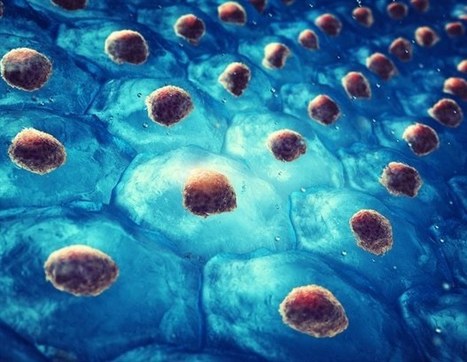
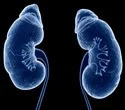


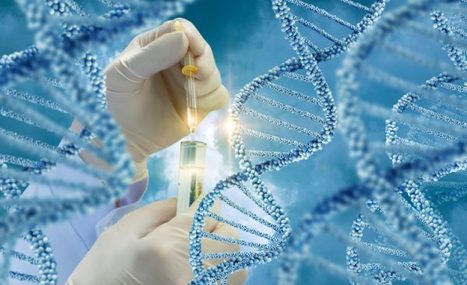

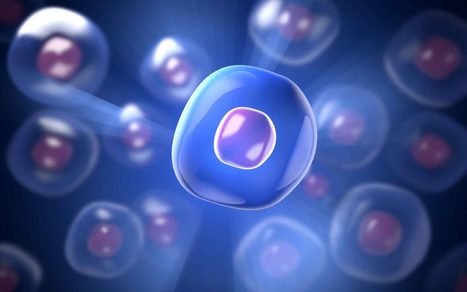
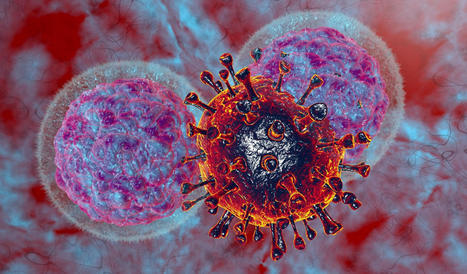
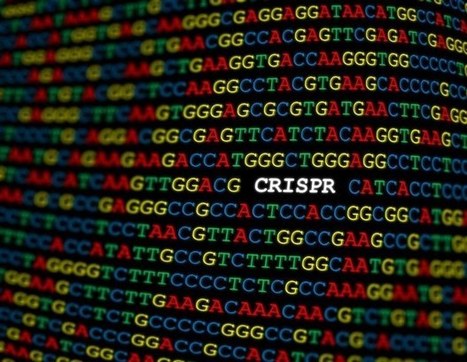
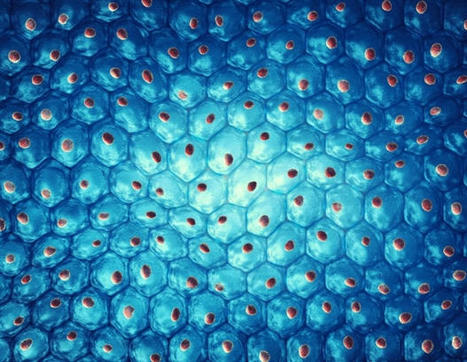
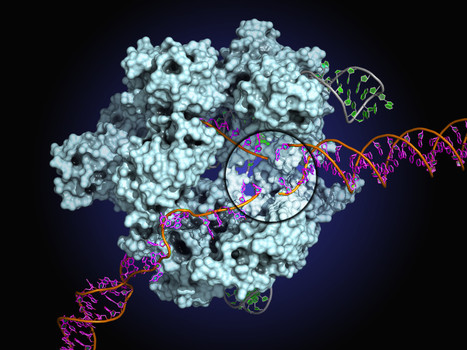
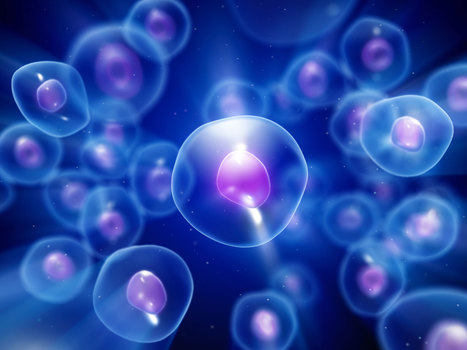
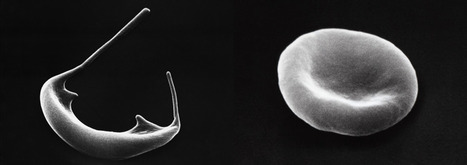
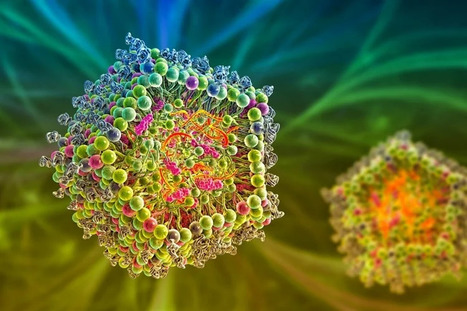
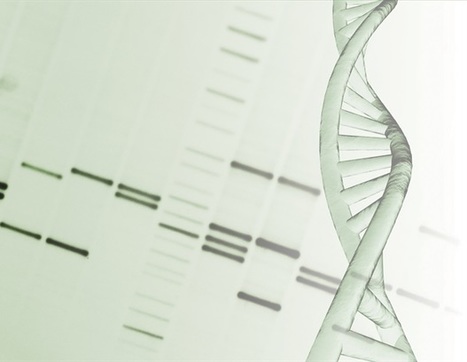






CARv3-TEAM-E T cells are CAR T cells targeting EGFR variant III tumor-specific antigen (EGFRvIII) in addition to wild-type EGFR. According to the results of the phase 1 INCIPIENT trial (NCT05660369) published in the New England Journal of Medicine, preliminary results in humans demonstrated that all 3 glioblastoma patients treated with CARv3-TEAM-E T cells between March 2023 and July 2023 showed dramatic and rapid radiographic regression of their tumors within days of receiving CARv3-TEAM-E T cells via a single intraventricular infusion. Responses were transient in 2 of the patients, however 1 patient, a 72-year-old man, showed an 18.5% decrease in tumor cross-sectional area on day 2 after receiving a single infusion of 10 x 106 CAR-positive CARv3-TEAM-E T cells. Moreover, 69 days after infusion, tumor cross-sectional area had decreased by a further 60.7% from baseline; the response was sustained and continued to improve at the last assessment, which took place more than 150 days after infusion.